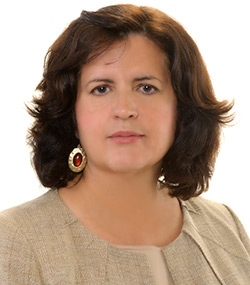Whether you stay in the workforce or take a hiatus, don’t forget to continue saving for retirement.
Taking a hiatus from the workforce — to raise children, to care for an elderly parent, or for any other personal reason — doesn’t mean you should take a break from retirement planning. Even though retirement funds aren’t automatically deducted from a regular paycheck, you want to avoid having a gap in your retirement funding. Instead, continue contributing even during your hiatus.
“Opting to raise a family does not preclude you from saving for retirement,” says Hanni K. von Metzger, Senior Vice President and Trust Advisor at Regions Private Wealth Management. “If you are outside of the full-time workforce for 10 years, which can be a big gap in funding your golden years, it’s important to keep squirreling money away, so that it can grow over time. Even if you stop working for a brief period, it can be challenging to make up for the lost retirement dollars.”
How to Make the Most of Retirement Planning Opportunities
Whether you take a short- or long-term hiatus from a full-time career, von Metzger suggests keeping these points in mind:
- Pay yourself first. From the time you start working, set aside up to 10 percent of your salary for retirement savings. Remember to pay yourself first before paying anyone else. A wealth advisor can help ensure a diverse mixture of stocks and bonds that will match your comfort level with your life goals.
- Plan for the retirement you want. Create a retirement plan and determine how much money you will need to support the lifestyle you want in retirement.
- Carefully consider a professional hiatus. Think about if and when you plan to take a hiatus from full-time employment. The older you are, the longer it may take for your investments to show greater gains through reinvesting and existing capital.
- Continue to contribute. If you opt to leave the full-time workforce, continue contributing to retirement plans, including individual retirement accounts. In 2020, you can contribute $6,000 to your IRAs; $7,000 if you’re aged 50 or over if you are married filing jointly and your spouse has income equal to both of your IRA contributions.
- Stay focused. Stay the course when investing. Work hard to keep emotions out of your portfolio decisions. Working with a wealth advisor can help allay fears in down markets and ensure that your portfolio is properly diversified and balanced.
- Meet with your wealth advisor regularly. Meet with your wealth advisor on a quarterly, semiannual, or annual basis to help you determine what kind of gap you may be experiencing in saving for retirement and what steps you can take to narrow it.
- Stay up-to-date. If you take a hiatus, you will eventually need to prepare for rejoining the workforce. Make networking a priority, so that when you look for a job you have contacts who can provide assistance or leads. Consider whether you will return to your original career or head in a new direction. Whatever the case, stay technology savvy, and focus on the skills you’ll need for jobs you want to pursue as you restart your career.
Prioritizing your own needs over the needs of others isn’t always easy, but in the case of retirement, it’s necessary. Learn more about making the most of your retirement savings.











